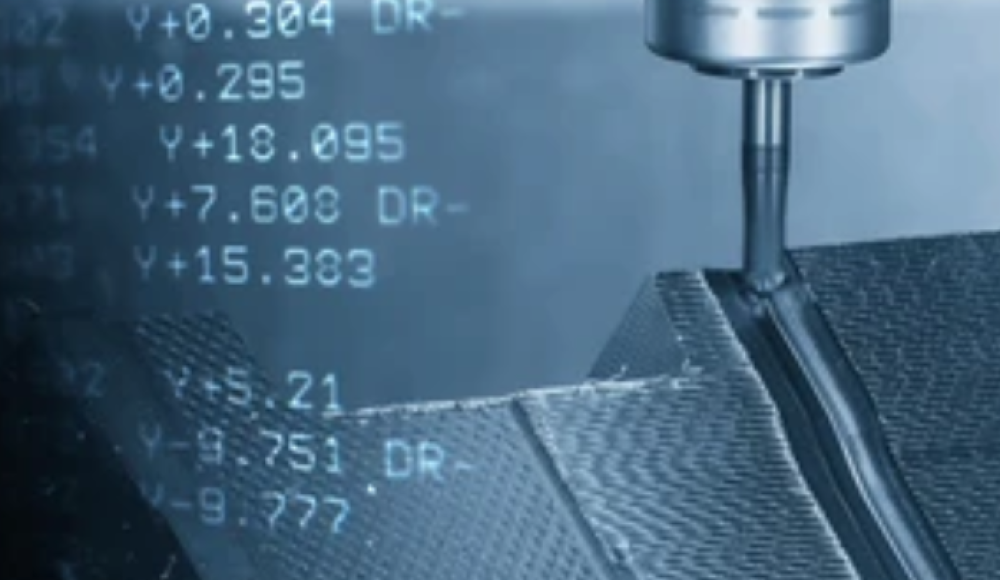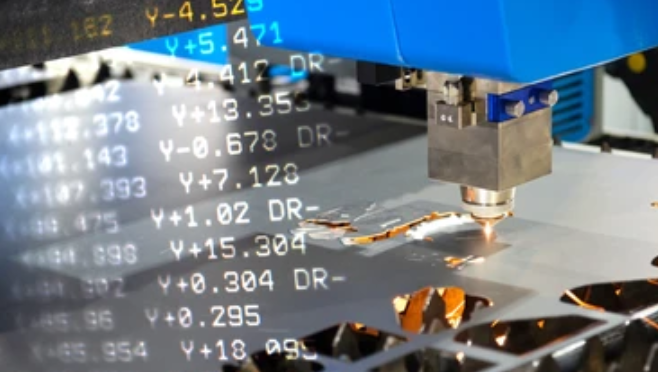CNC programming is one of the most important parts of the current manufacturing process. Since it enables precision when controlling the tool and automation in the machining processes. CNC programming involves two different but related languages – G and M codes code which give direction to the CNC machines. Learning these codes is important for any person who wants to have some interaction with CNC technology regardless of whether the trader is a programmer, operator, or technician. Concerning the guidelines this article will explain G and M codes, the difference between both, and the methods of programming CNC-controlled machines.
How Does CNC Programming Control the Working of CNC Machines?
CNC programming leads CNC machines by using a detailed set of instructions that are easily understandable by the machines. These instructions are about the design and operation necessities that must be considered. Each command sets a specific task – position, orientation, velocity, or tool use – which makes it versatile and permits elaborate micro-manipulation. The programming language used here, G and M codes to be more specific. It helps the machine perceive the movements and tasks you want to perform. Using CNC programming, you can assemble complicated separately with precision, reliability, and velocity, without manual help.
What are G Codes in CNC Programming?
G codes are often called “geometric codes” because they are the main languages used for programming CNC machines. They tell the machine how to get from one point to another, which and what axes to utilize, and how to accomplish certain work. Standard G codes include motion along a straight line (G0), circular (G2, G3), and changing the feed rate (G1). G codes are mainly concerned with the trajectory of the tool at the time of machining. So, they play a key role in defining the geometry of the final product.
What are M Codes in CNC Programming?
In addition to G codes, there are M codes, also called “miscellaneous codes” that give instructions related to the machine’s actions rather than where the axis will move. These codes govern several other operations associated with a machine including the initiation of the spindle (M3 and M5), the coolant (M8 and M9), and the change of tools (M6). M codes are important and used to control the non-movement functions of the control during machining to perfect the manufacturing process.
Detailed List of Basic G Codes
The following are some of the popular Godes with their functions and working:
| G Code | Function | Description |
| G0 | Rapid Positioning | Quick move to a position without cutting. |
| G1 | Linear Interpolation | Moves tool in a straight line at a specified feed rate. |
| G2 | Circular Interpolation (CW) | Moves the tool in a clockwise arc. |
| G3 | Circular Interpolation (CCW) | Moves tool in a counterclockwise arc. |
| G4 | Dwell | Pauses for a specified time during operation. |
| G20 | Programming in Inches | Sets units to inches. |
| G21 | Programming in Millimeters | Sets units to millimeters. |
| G28 | Return to Home Position | Moves tool to home position. |
| G90 | Absolute Programming | Uses absolute coordinates from the origin. |
| G91 | Incremental Programming | Uses relative coordinates from the current position. |
Detailed List of Basic M Codes
The following are some of the commonly used M Codes with their functions and working:
| M Code | Function | Description |
| M0 | Program Stop | Stops the program manually. |
| M1 | Optional Stop | Stops the program if the optional stop is enabled. |
| M2 | End of Program | Ends program and resets. |
| M3 | Spindle On (CW) | Starts spindle rotation clockwise. |
| M4 | Spindle On (CCW) | Starts spindle rotation counterclockwise. |
| M5 | Spindle Stop | Stops spindle rotation. |
| M6 | Tool Change | Initiates tool change. |
| M8 | Coolant On | Activates coolant system. |
| M9 | Coolant Off | Deactivates coolant system. |
| M30 | End of Program and Rewind | Ends program, rewinds, and prepares for next cycle. |
How to Program a CNC Machine Using G and M Codes
Programming a CNC machine can be accomplished through various methods:
1. Manual Programming
Manual programming means writing the CNC code using G and M codes. This is one of the most important techniques in the entire CNC programming technique. This method is best used when the analyst has good insight into the workings and capacity of the machine. Software engineers employ specific text edits that store and modify the code, then compile it and transfer it to the CNC machine.
2. Programming in Operation
In operation programming, operators key in commands directly on the machine’s control panel. This method is applicable in straightforward operations or modifications during an activity. Besides this, it creates room for real-time intervention without invoking intricate programming.
3. Designing CAD CAM Products for Programming
CAD (Computer-Aided Design) and CAM (Computer-Aided Manufacturing) systems take the program of the design file and create the CNC code automatically. Designers draw layouts in computer-aided designing and slicing programs. Then these programs are further interpreted by computer-aided manufacturing software into G and M codes for use in NC machining.
Differences Between G Code and M Code
G Codes and M Codes are digital commands found in Computer Numeric Control known or dispensed in a letter-number combination (G1 or M3 or so on). During the operation of the CNC machine, they help control its actions and regulate the machining process. All of them are part of a CNC program that constitutes a key component of the machining process.
But they’ve so many differences as well. So, let’s compare both G and M Codes in the following table:
| Criteria | G Code | M Code |
| Functionality | Primarily controls the movement of the machine tool. | Manages auxiliary functions like starting/stopping spindle, coolant control, and tool changes. |
| Type of Control | Motion control (linear and circular movements). | Miscellaneous functions (e.g., program stops, tool changes). |
| Programming Style | Specifies exact paths and operations for machining. | Executes actions that support the machining process. |
| Syntax | Generally starts with the letter “G” (e.g., G0, G1). | Generally starts with the letter “M” (e.g., M3, M5). |
| Examples | G0, G1, G2, G3, G28. | M0, M2, M3, M8, M30. |
| Context of Use | Used during the cutting and machining processes. | Used to manage machine settings and operations outside of cutting. |
| Frequency of Use | Frequently used in most CNC programs. | Used less frequently, mainly for specific tasks during machining. |
| Parameters | Often requires additional parameters (e.g., coordinates, feed rate). | May or may not require additional parameters (e.g., M3 often requires spindle speed). |
| Execution Timing | Executed in the sequence of machining operations. | Can be executed at any time, often when a specific condition is met (e.g., start or stop of operations). |
Significances of G and M Codes in CNC Programming
So, here are some important G and M codes in CNC machine programming:
- Precision and Accuracy: M and G codes define different protocols within the machining operation to deliver quality work.
- Automation: These enable automatic processes in product manufacturing to eliminate other human interferences and increase efficiency.
- Versatility: They can include virtually any operation and are used in many contexts because of G and M codes.
- Standardization: G and M codes are universal means of coding. So, the programmers practice different machines and goods from several companies.
- Flexibility: Programmers have the flexibility to make changes to the code whenever a new design or a new production form is desired.
Challenges Occur by Using G and M Codes in CNC Programming
Here are some challenges you can encounter while using G and M code;
- Complexity of Codes: Certain concerns with G and M codes make programming to be cumbersome, especially for the learners.
- Error Prone: Manual coding also poses risks of error, any of which may have a great result cost in the machining process.
- Machine Variability: One of the main issues observed is that different CNC machines may generate the same G and M codes. But they may understand and execute them in a completely different way.
- Limited Documentation: Inadequate documentation makes them less useful for learning. Besides this, you can encounter a problem in a certain area.
- Skill Requirements: Training in G and M codes is necessary and takes a lot of time and experience is not always available.
Conclusion
In conclusion, G and M codes are important and offer the process base for CNC programming for high-precision manufacturing. Anyone involved in CNC machining must have or need to understand these codes, their differences, and all the available programming methods. Efficient mastery of G and M codes improves the various manufacturing processes.
Frequently Asked Questions
1. What are G and M codes?
G codes are related to the motion of the CNC machine and M codes are related to the machine operations.
2. Can codes for G and M minorities be used interchangeably?
It should be noted that G and M codes are completely different and therefore cannot be interchanged.
3. How can I learn the CNC machine’s programming language?
In learning CNC programming there are basic guidelines such as G and M codes, manual programming, and CAD/CAM programming.
4. Is there G and M code etiquette/civility?
Incidentally, despite the high level of originality seen in the CNC machining industry, there are standard G and M codes acknowledged by most players.
5. What nulls do programmers experience with G and M codes?
With programming, there are challenges, i.e. complexity, errors, variability of the machines, documentation problems, and high-level skills required.
6. What role do G and M codes play?
It includes precision, automation, versatility, flexibility, and standardized programming of CNC machines.









4 thoughts on “Understanding the CNC Programming Languages Using G and M Codes”